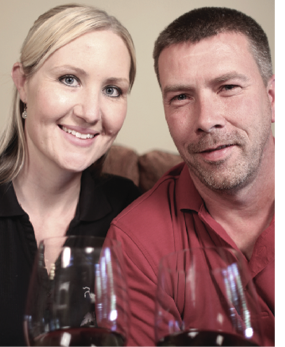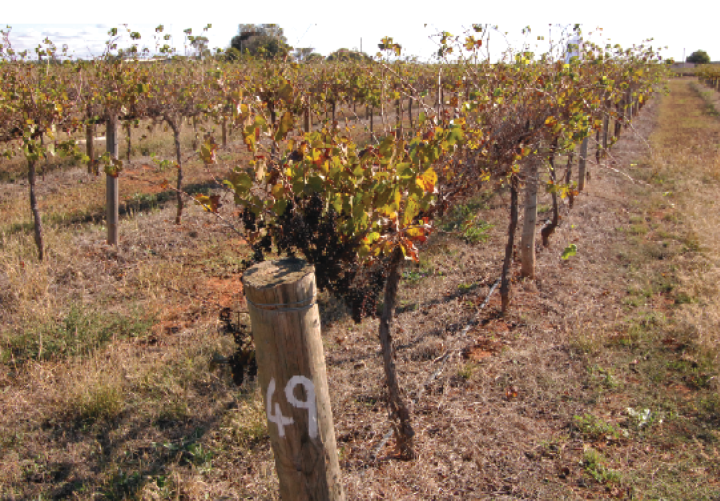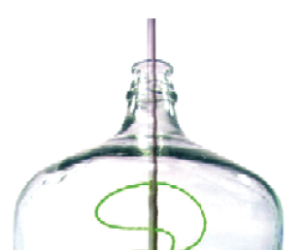Looking to try something new? You can make unique and wonderful wines from plants found in your garden or even growing wild in your backyard.

Winemaker and Owner of TSJ Wine Blenders in Roseville, Michigan. Tom began as a home winemaker about 1990 utilizing grapes from his father’s small farm. Compliments on their wines led Tom and his wife Sue to open a small winery in 1998.
As you can imagine, tomato wine has a unique taste. It is similar to a Spumante, without the bubbles, and has a slight tomato finish. An aroma of toast is frequently noticed. Our tomato wine is a drier wine. I have also heard people say that it reminds them of Scotch. Generally speaking, tomato wine can be considered a table wine. It is a great alternative to red wines when consuming red sauces. It also pairs well with things like bruschetta and pizza.
I prefer to use Roma tomatoes.
This tomato variety possesses the characteristics of being meaty and juicy, and to me, is somewhat more flavorful than other varieties. The tomatoes should be red and firm at harvest. Not soft and over ripe. Each tomato is inspected for quality and ripeness by hand and then quartered before they are run through the crusher and press. Other than the standard ingredients used in wine-
making, our tomato wine contains no additional flavoring agents. Like any other fruit, similar adjustments to the specific gravity and acid level will need to be made. I make these adjustments at the beginning of the winemaking process. There may be some slight variation in tomato crops from year to year, but as long as you are utilizing firm, red tomatoes, no significant differences in taste have been noticed from one harvest to the next.
I recommend that tomato wine be allowed to condition for at least 12 months. Once bottled, as long as cork integrity is preserved, tomato wine can age in the bottle indefinitely.
 Von Potter is the Winemaker and Co-Owner of Potter Wines in Boise, Idaho, with his wife, Crystal. Von is self-taught and discovered winemaking by accident thanks to an abundance of backyard grapes and WineMaker magazine. Potter Wines makes conventional wines as well as their popular jalapeño wines.
Von Potter is the Winemaker and Co-Owner of Potter Wines in Boise, Idaho, with his wife, Crystal. Von is self-taught and discovered winemaking by accident thanks to an abundance of backyard grapes and WineMaker magazine. Potter Wines makes conventional wines as well as their popular jalapeño wines.
If you have never had jalapeño wine, it is spicy, but not too hot to enjoy. We use Idaho Riesling grapes to provide the backbone of the wine, which results in well-structured mouthfeel — not light bodied or wimpy thanks to fermenting the peppers with the grapes. The aroma is peppery and warm with a tropical fruit nose. It starts with a great white wine flavor, slightly acidic, with terrific balance. Then the spice hits. The first sip is surprising but not overpowering.
Jalapeño wine pairs well with food — I love a glass of our chipotle with a good grilled rib eye. That said, we also love to cook with it and have acquired quite the recipe library. It makes for killer cocktails too — jalapeño lemonade and jalapeño wine margaritas are two of our favorites.
I prefer our peppers to be red. They have a surprising amount of sweetness if allowed to fully ripen and add great color to the finished wine. Even if they are green, as long as the peppers are fully developed, they work great. There will always be differences in harvests. Sugar and heat can really vary from year to year so there may be some trial and error for the home winemaker to get it just the way they want. Fortunately, we have a couple of great suppliers so we can depend on great fruit and peppers.
We prepare the peppers with hours and hours of chopping and smoking (for the chipotle).
Our jalapeño wine lineup currently consists of our original, chipotle, pineapple, and scorching wines. All are fully fermented, not infused. I allow them to condition in stainless barrels for about nine months. It clears beautifully on its own, so it doesn’t need much filtering. Then a couple of months in the bottle and it’s ready for whatever you can dream up. Jalapeño wine ages well for a year or two in the bottle, though we have found it rarely hangs around that long.

Owner and Winemaker of Hidden Legend Winery in Victor, Montana, Ken Schultz sometimes thinks he was meant to make wine. His favorite uncle growing up was a serious home winemaker and for his eighth grade science fair Ken made moonshine.
I make my dandelion wine bone dry. The flavor turns out light, delicate, grassy and delightful with a nose very much like a Sauvignon Blanc. Dande-lions have a unique and what can only be described as a “summery” flavor that can easily be overpowered by other flavors. It’s nice for sipping and pairs very well with a Dubliner cheddar cheese.
I still have my original recipe for dandelion wine that I started using over 35 years ago. For every gallon (3.8 L) it calls for 6 cups of dandelions, 2 pounds (0.9 kg) of cane sugar, 3 tablespoons of acid blend, 1⁄4 teaspoon of yeast nutrient, and the appropriate amount of wine yeast. A 5-gram yeast packet will start up to 6 gallons (23 L). I leave the blooms in the fermenter no longer than three or four days, otherwise it develops a strong mowed lawn flavor. The only changes from this original recipe to volume production are: I measure the starting Brix during the addition of sugar for more accuracy and use only tartaric and malic acid prior to fermentation. I also now use tannins at a rate of 0.6 g/gallon for stability and mouthfeel. 220 pounds (100 kg) of blooms still makes exactly 220 gallons (833 L) of wine.
I like to start at 22.5 °Brix and ferment all the way to dry. My target titratable acidity is 0.66 g/L with a pH of 3.5. This is a good environment for a quick, clean fermentation and a good balance for flavor in the finished wine. If it needs adjusting before bottling I use citric acid.
If you can allow it to condition for a full year then do. In the bottle, dandelion wine ages just like a white wine. It will mature at two years and reach its peak at four. Very important for home winemakers is to be careful about where you pick your dandelions — don’t pick the blooms from a yard or field that has been fertilized and stay as far from roads as possible as these two things will spoil the wine.

 Von Potter is the Winemaker and Co-Owner of Potter Wines in Boise, Idaho, with his wife, Crystal. Von is self-taught and discovered winemaking by accident thanks to an abundance of backyard grapes and WineMaker magazine. Potter Wines makes conventional wines as well as their popular jalapeño wines.
Von Potter is the Winemaker and Co-Owner of Potter Wines in Boise, Idaho, with his wife, Crystal. Von is self-taught and discovered winemaking by accident thanks to an abundance of backyard grapes and WineMaker magazine. Potter Wines makes conventional wines as well as their popular jalapeño wines.





